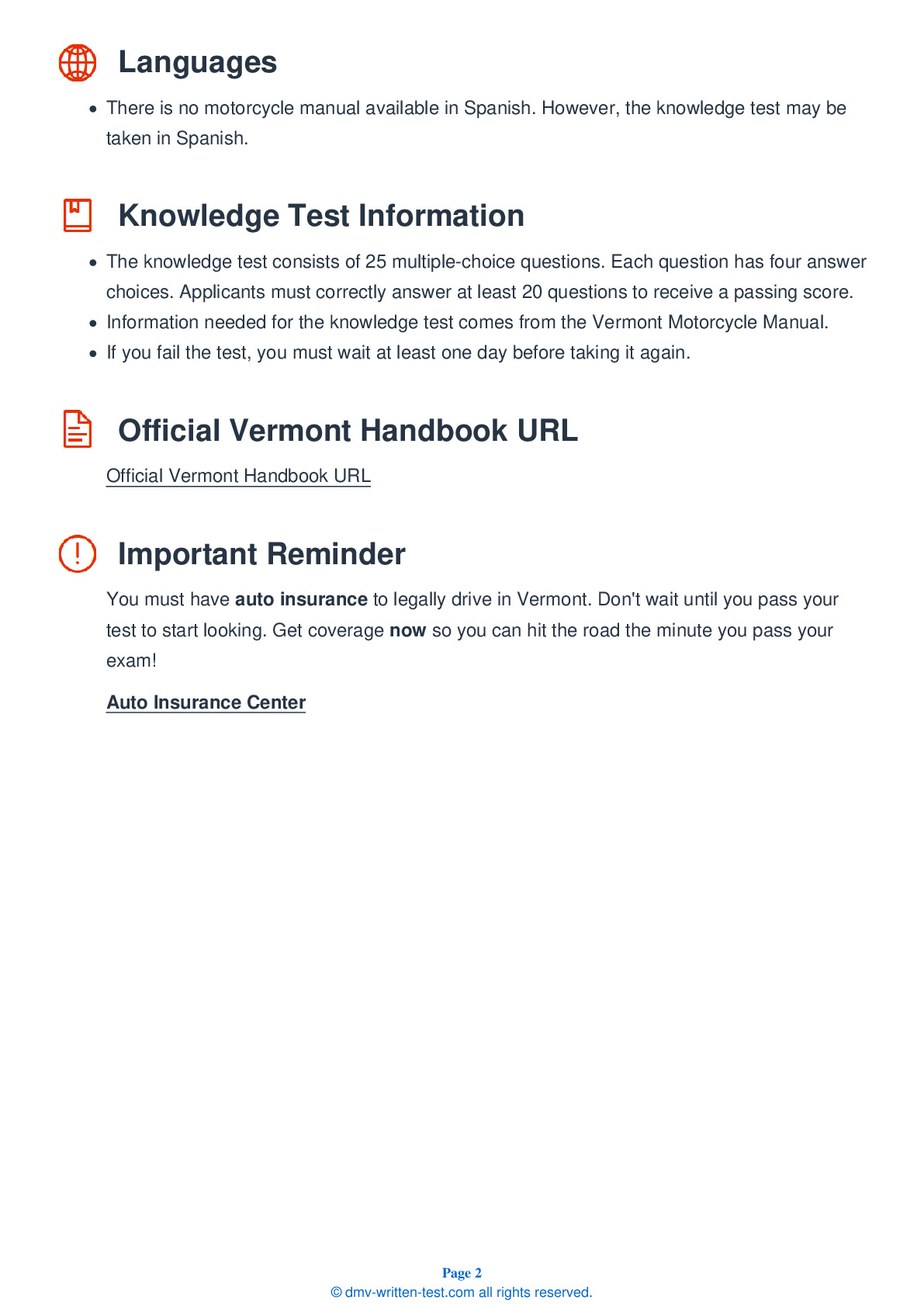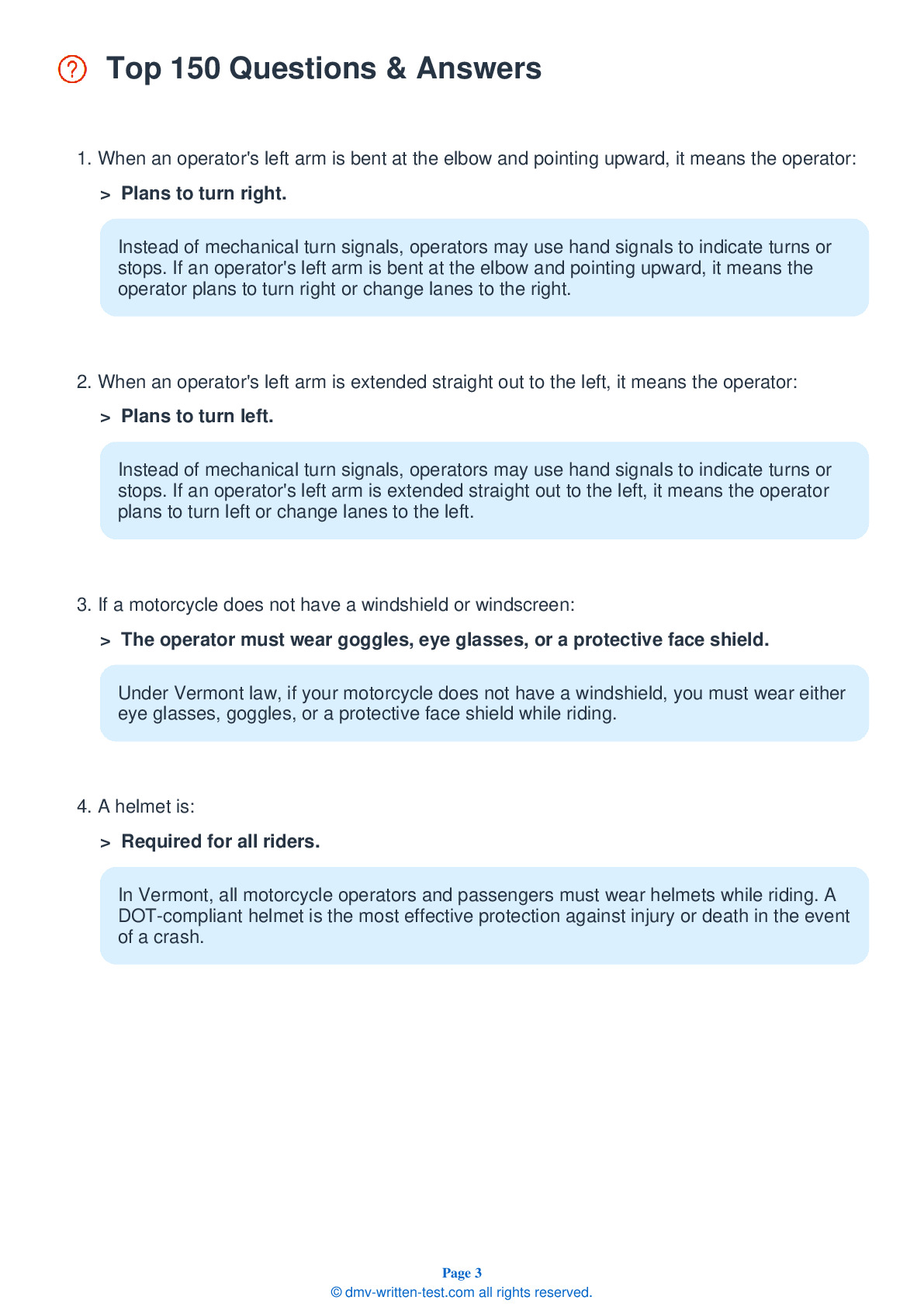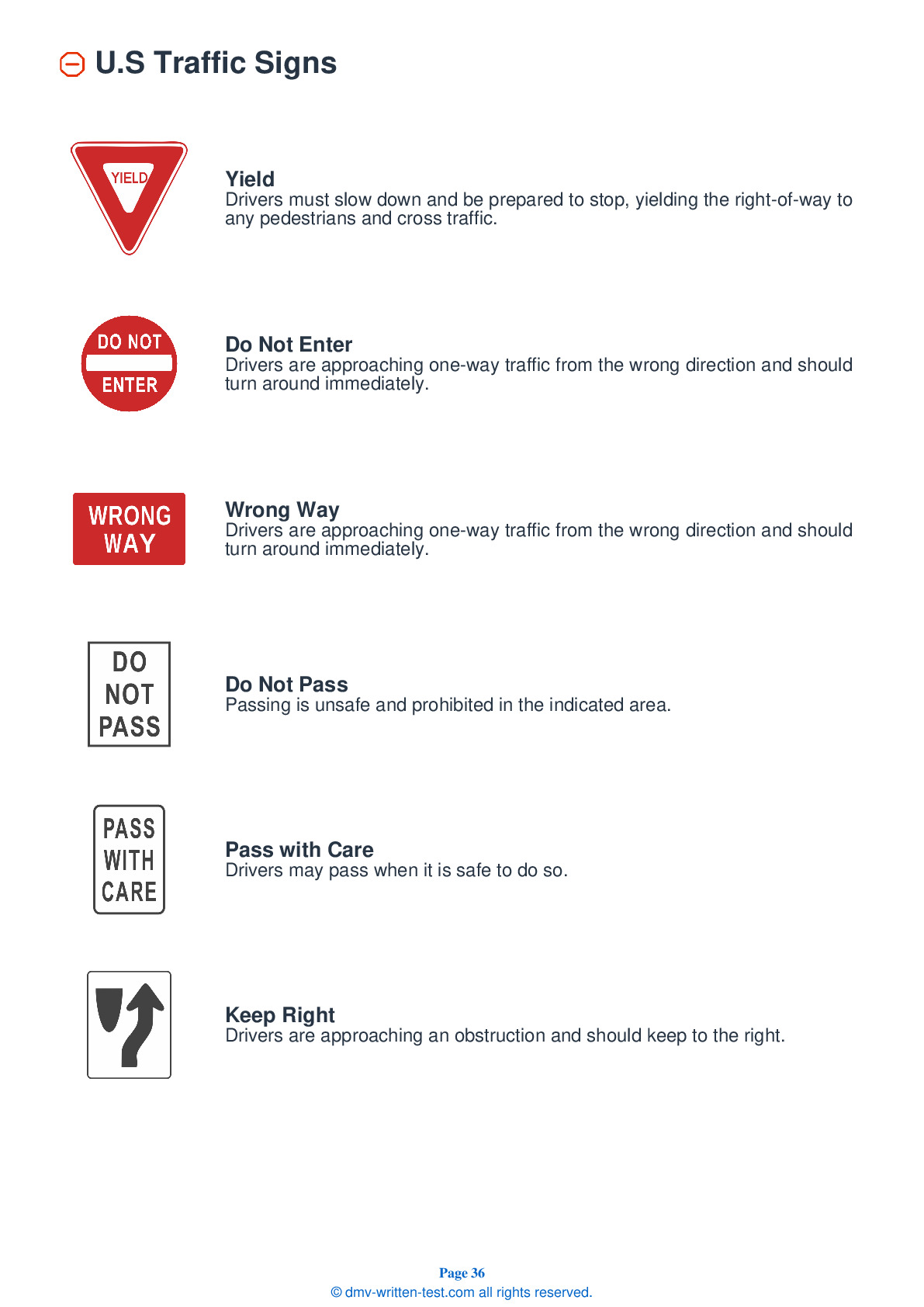2025 Vermont Motorcycle Permit Test 16
The following questions are from real DMV written motorcycle permit tests. These are some of the actual permit questions you will face in Vermont when getting your motorcycle learners permit. Each motorcycle theory practice test question has three answer choices. Select one answer for each question and select "grade this section." You can find this button at the bottom of the drivers license quiz. For a complete list of questions and answers for Vermont please visit https://cheat-sheets.dmv-written-test.com/en/vermont/motorcycle.
Number of Tests
Number of Question
Passing Score
7. Maximum straight-line braking is done by:
Explanation
Maximum straight-line braking is accomplished by simultaneously applying both the front and rear brakes without locking either wheel.
8. A helmeted rider is _______ more likely to survive a crash than a rider not wearing a helmet.
Explanation
No matter the speed, riders who are not wearing helmets are three times more likely to die from head injuries than riders who are wearing helmets at the time of a crash.
9. When going through a curve, you should:
Explanation
Road and traffic conditions can change at any time. Always be prepared to change your lane position as appropriate no matter where you are on a roadway. The best path through a curve does not necessarily follow the curve of the road.
10. A linked braking system:
Explanation
A linked braking system connects the front and rear brakes on a motorcycle. This system applies braking pressure to both brakes when either the front or rear lever is used. Check your owner's manual for a detailed explanation of the braking system on your motorcycle.
11. The front brake supplies how much of a motorcycle's potential stopping power?
Explanation
The front brake of a motorcycle is more powerful than the rear brake and can provide at least 70 percent of the motorcycle's total stopping power.
12. When a vehicle attempts to pass you from behind, you should:
Explanation




